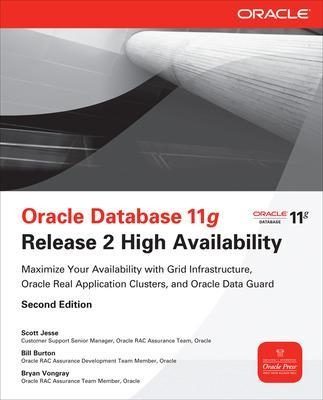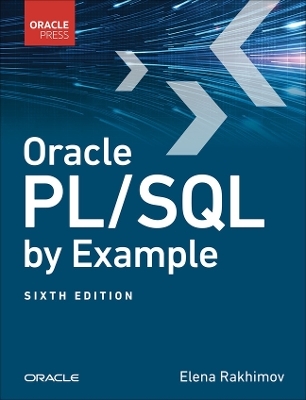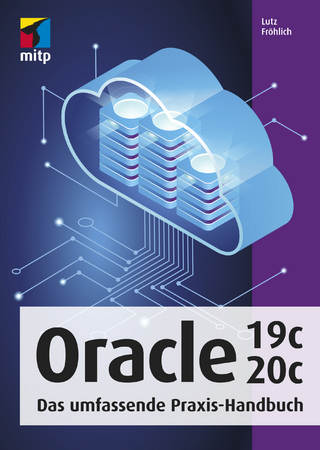
Oracle Database 11g Release 2 High Availability: Maximize Your Availability with Grid Infrastructure, RAC and Data Guard
Osborne/McGraw-Hill (Verlag)
978-0-07-175208-4 (ISBN)
- Titel z.Zt. nicht lieferbar
- Versandkostenfrei innerhalb Deutschlands
- Auch auf Rechnung
- Verfügbarkeit in der Filiale vor Ort prüfen
- Artikel merken
Publisher's Note: Products purchased from Third Party sellers are not guaranteed by the publisher for quality, authenticity, or access to any online entitlements included with the product.
Leverage Oracle Database 11g Release 2 High Availability FeaturesProtect your critical business assets and achieve maximum database uptime using the detailed information in this Oracle Press guide. Oracle Database 11g Release 2 High Availability: Maximize Your Availability with Grid Infrastructure, Oracle Real Application Clusters, and Oracle Data Guard, Second Edition provides cost-effective solutions to current availability challenges. Discover how to grid-enable your IT framework, roll out Oracle Real Application Clusters, maintain standby databases, and deploy Oracle Flashback. Monitoring, tuning, and disaster recovery techniques are also covered in this comprehensive resource.
Install Oracle Clusterware (as part of Oracle's grid infrastructure) or upgrade from an earlier version
Build test clusters and hosts using Oracle VM
Work with Oracle Automatic Storage Management and Oracle Automatic Storage Management Cluster File System
Create synchronized standby databases using Oracle Data Guard
Reliably archive and restore data with Oracle Recovery Manager
Use Oracle Flashback to identify and undo user errors
Configure Oracle Enterprise Manager Grid Control for management of an Oracle maximum availability architecture environment
Scott Jesse (Colorado Springs, CO) is an Oracle Certified Professional who has worked extensively with the Windows NT Operating System for more than 7 years. Scott began by deploying Windows NT on a corporate-wide rollout for more than 3000 users while working for MCI Worldcom. For the past 5 years, Scott has worked in the Oracle support organization, primarily assisting Oracle customers in implementing the Oracle RDBMS on Window NT. For the last 3 years, Scott has specialized in clustering and high availability technologies on the Windows NT platform, including Oracle Failsafe and Oracle Parallel Server. Bill Burton (Annapolis, MD) is a member of Chesapeake's technical and training staff. Bill has been working with Cisco routers since 1991 and became a CCIE in 1994. He also has been teaching Cisco courses for the past five years.
Part I: Oracle's Grid Infrastructure
Chapter 1. Architecting the Oracle Database Grid
Chapter 2. Oracle VM
Chapter 3. Grid Infrastructure
Chapter 4. Grid Infrastructure Installation and Configuration
Chapter 5. Oracle Automatic Storage Management
Part II: Oracle Real Application Clusters (Oracle RAC)
Chapter 6. Oracle RAC Setup/Configuration
Chapter 7. Oracle RAC Administration
Chapter 8. Utility Computing: Applications as Service
Part III: Disaster Planning
Chapter 9. Oracle Data Guard
Chapter 10. Backup and Recovery for MAA Environments
Chapter 11. Flashback Recovery
Part IV: Enhancing Availability with Additional Features
Chapter 12. Oracle Data Guard Broker
Chapter 13. Oracle Data Control
Index
| Zusatzinfo | 100 Illustrations |
|---|---|
| Verlagsort | New York |
| Sprache | englisch |
| Maße | 188 x 234 mm |
| Gewicht | 955 g |
| Themenwelt | Informatik ► Datenbanken ► Oracle |
| ISBN-10 | 0-07-175208-0 / 0071752080 |
| ISBN-13 | 978-0-07-175208-4 / 9780071752084 |
| Zustand | Neuware |
| Haben Sie eine Frage zum Produkt? |
aus dem Bereich


